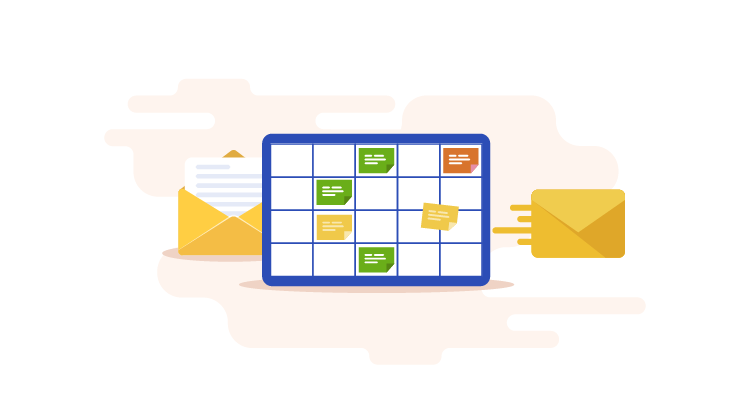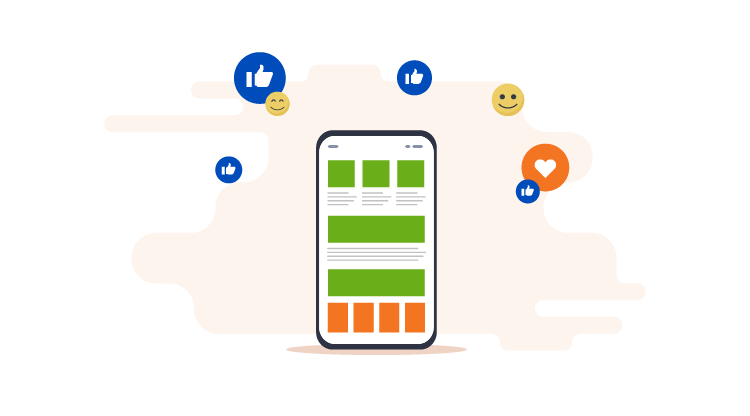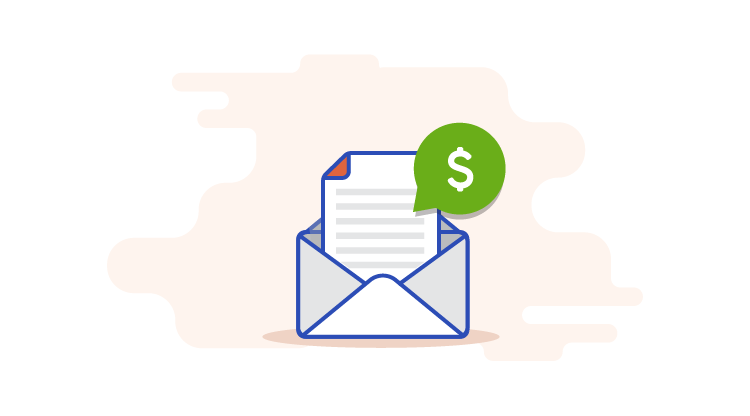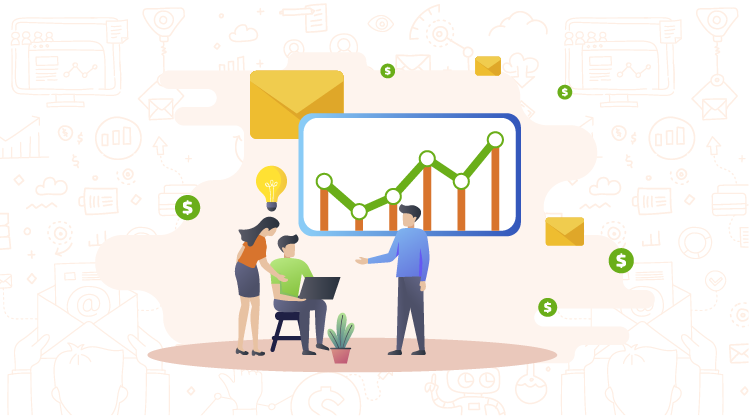2021 holds a lot of promise for B2B marketers who leverage the best digital trends to their advantage. Read this post to learn why and how programmatic email monetization can help.
B2B marketers look to the final months of 2020 and the coming new year to help them move beyond the coronavirus pandemic into a more profitable future. Among the year’s leading digital marketing strategies, one stands out in its effectiveness: programmatic email monetization.
Key Takeaways:
2021 B2B Digital Marketing Trends include:
Top Six B2B Digital Marketing Trends for 2021: How They Can Boost Your Bottom Line
#1. The Blue Ocean Strategy
Writing in the B2BdigitalMarketers.com blog, Eduard Dziak suggests that the Blue Ocean strategy will emerge as one of the coming months’ most effective digital strategies for B2B companies.
Companies that adopt this tactic open up new markets, finding new demand for their products and services. In those markets, there are few competitors, at least at the start.

This model can also build brand awareness through effective marketing, gaining them an advantage over others who might enter the space later.
Coca-Cola used the Blue Ocean strategy to experience legendary success. A pharmacist, looking to expand his business into a new market, invented the mood-boosting beverage in the late 1800s. Though he didn’t have the advantage of digital channels, he marketed the drink aggressively, setting his company on course to become one of the most prominent global brands to this day.
HubSpot leveraged this strategy as well to reinvent content marketing in the digital space. Long-form content marketing has existed in the B2B realm since 1895, when John Deere created its landmark print newsletter, The Furrow, to provide informative articles to the agricultural industry.
However, HubSpot took content marketing to new levels with its blog posts and email newsletters, even inventing a new term for this new market — inbound marketing.
#2. Interdepartmental Collaboration
Businesses have discovered that breaking down the barriers that divide teams on one department from another leads to greater productivity, particularly in digital marketing and sales.
Digital marketing teams, for instance, can also automate the transfer of leads they generate through to the sales team, saving time and money.
Sales teams, on the other hand, could communicate the feedback they receive from their prospects to the marketing team. The content team, then, creates content, such as emails and blog articles that answer their questions.
Subject matter experts, such as engineers and developers, are also a fertile source of information for the marketing team. Sales teams often consult them to check on the possibility of modifying various product specifications to meet their prospects’ needs.
Businesses that put cross-functional collaboration to work for them have realized that it is one of the essential keys in meeting their strategic goals.

With the growth of Agile methodology, the collaborative approach will become an even more critical ingredient in a company’s success.
#3. Repurposing Existing Content
If your blog or website — if you’re a content publisher — has been around for a while, you probably have some effective pieces of older content that need a little updating to attract more readers. Enrich them with structured data and answers to frequently asked questions to boost your chances of landing at the top of search results.
Update references to include the latest research on the topic to add more value to your posts and then share them on social media.
Be sure to add an invitation to join your email subscribers list at the end of each article. Check how your revamped content performs among your target audience and include those pieces that engage your audience the most in your email newsletter.

#4. Email Marketing Automation
Even though automating B2B digital marketing tasks isn’t new, the capability to automate content distribution on a variety of channels has grown exponentially.
With the advent of programmatic ad buys on a variety of channels, including email, B2B businesses can leverage this capability to get their message out when and where their customers are online.
Automating your email marketing allows you to create content at your convenience and send it out automatically. You can schedule your emails to reach prospects at the optimum time, increasing the chances of your subscriber opening it.
In addition, you can send rule-based automated emails at specific points in the B2B buyer journey. For example, if someone signs up for your newsletter, you can send them a confirmation email with a thank-you gift inside, such as a valuable resource. Or, if they request more information about a product, you can automate your system to send them an e-book that ends with an invitation to schedule a demo.

You can use email automation to segment your audience so that you can send different newsletters to each segment according to their interests. Also, you can see at a glance which actions your recipients have taken. Having such data allows you to send personalized, high-value content to each recipient at exactly the right time, helping to drive them further along the sales pipeline.
#5. Larger, More Targeted Email Lists
The more sophisticated data analytics become, the better you can target customers with informative blog and social media content that they need to solve their major challenges.
As readers learn to trust your industry expertise, they will likely become subscribers to your email newsletter.
Since email generates more conversions than social media, paid ads, or organic traffic, converting casual visitors to become email subscribers is the key to success. The more aligned these visitors’ interests are to what you offer, the better the chance that they’ll become subscribers.
#6. Native Programmatic Email Advertising
The problem with the executives you want to reach with your programmatic ad buys, though, is that they’re too busy to read intrusive ads. In fact, 47 percent of Internet users use ad blockers to prevent them from seeing these ads as they browse the Internet.
The solution? Native advertising in email.
Native ads appear as part of the content in which you embed them. Since they’re AI-chosen to meet your target customers’ needs, they won’t intrude on their experience.
Even though native Internet ads might not be intrusive, they can still trigger ad-blocking programs. But if you insert these ads into your email newsletters, they have all the advantages of other native ads but aren’t as likely to attract ad blockers’ attention.

Like online programmatic ads, programmatic native email ads appear as related content within the body of your emails. Since they’re chosen by AI, the products or services they advertise will likely appeal to your readers.
How Does the COVID-19 Pandemic Affect These Digital Marketing Trends?
Although the pandemic might have temporarily altered the brick-and-mortar aspect of your business, you can still use these emerging digital marketing strategies to reach your prospects with informative content that they can put to use.
In fact, they might even have more time to read the content you produce, so you should maintain — or step up — your content production.
Even if you can’t operate certain aspects of your business, you can still earn revenue to foot the costs of publishing your newsletters and other content. Programmatic email monetization uses native ads within the body of your newsletter to produce an extra stream of revenue that grows with the number of emails you send and the number of people who click on these ads.
Leverage the Coming Trends with Programmatic Email Monetization
Email newsletters themselves bring long-term value to their publishers with more conversions, more leads, and, ultimately, more sales. However, when you combine the power of email with programmatic native ads, you put yourself in the best position to leverage all these trends on the horizon.

It all depends on the quality of content that your newsletter provides.
With top-quality content infusing all your communication, you can take advantage of all these coming trends.
The better the content, the further your newsletter will reach among your target audience.
For newsletter publishers, quality content can increase the organic traffic to your website and other owned assets through shares and word-of-mouth.
Adding programmatic native ads within your email newsletter does not only provide your business with an added stream of revenue. They also provide added value to your subscribers, since they advertise products and services tailored to your recipients’ needs.
Email enjoys the highest ROI among B2B marketing strategies. When you grow your email list into the primary channel for your business’s growth, you’ll see a significant boost in your bottom line.
You also can place programmatic native ads within transactional emails, such as account statement notifications, order and delivery confirmations, password resets, legal updates, invoices, and shipping notifications. Replies to queries for information can also feature native ads.
With inboxAds, your company can monetize various types of emails while taking advantage of all these digital marketing trends for the coming year. You can even expand your portfolio of services with our white-label email monetization service, opening up new markets in your space.
Unlock the power of programmatic email monetization as an essential pillar of your digital advertising strategy.
Get in touch with the inboxAds team to get started today.





